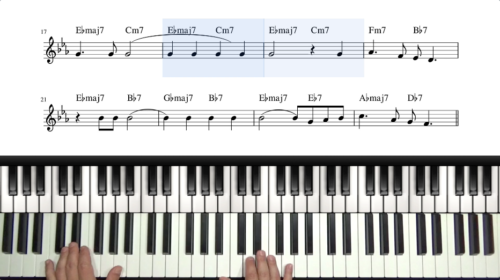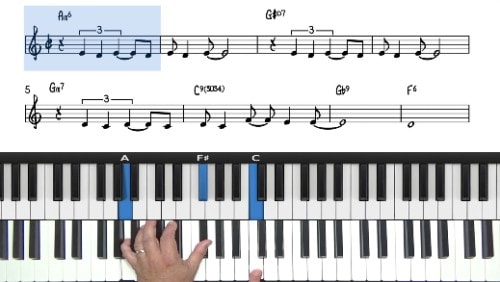Pitch As Rhythm
In this 5 Minute Masterclass we will be talking about pitch as rhythm.
When studying music, we often distinguish 3 core components which are rhythm, melody, and harmony. Whilst it is effective to break isolate these elements during study, there is also some interesting relationships in between these essential elements of music.
The Relationship Between Pitch & Frequency
If we break down pitch to its rawest form, we have frequency, and frequency is rhythm.
Using the ‘A’ above middle C as an example, on the 440 standard tuning, that ‘A’ is vibrating at 440 times per second. If we this of the analogy of a drummer – an amazingly bionic drummer! – and this drummer could play a snare drum at 440 times per second, this is the sound that would come out.
If the drummer could play the snare drum 220 times per second, it would produce the sound of the A an octave down. This relationship repeats up and down the length of the keyboard and so in its purest essence, pitch is rhythm.
Practice Applications Of This Concept
As human beings – even non-musicians – we have a very keen sense of hearing. Our hearing our fastest sense. When listening, we can process the information and respond in just a few milliseconds.
We then use a number of demonstrations to highlight this concept:
- The difference between major and a minor chords
- The placement of ‘wrong’ notes in a chord
- The ‘wave’ and ‘vibration’ of intervals as we change registers
Practice Tips
-
Understanding what note is right to play should be an intuitive choice, and not exclusively a theoretical choice.
-
Much of the harmonic instruction that we are taught through various manuals and methods can make you think of music as a series of prohibitions.
-
It can be detrimental to think of music in this prohibited way of thinking.
- Instead reach for the notes that are interesting to your ears and allow you to express your intuitive inhibition, irrelevant of traditional theoretical restrictions.






